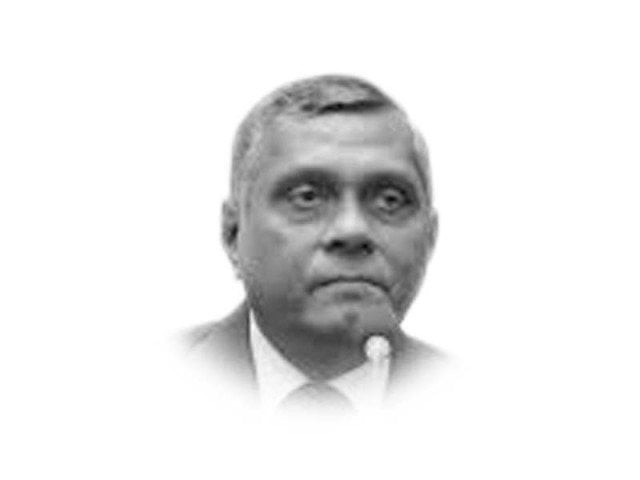Can India become the world’s third biggest economy?
Modi predicted that India would overtake Japan and Germany

While addressing from Red Fort Delhi on the occasion of India’s 75th Independence Day on August 15 this year, Indian Prime Minister Narendra Modi predicted that in coming few years, his country would overtake Japan and Germany and emerge as the world’s third largest economy.
India’s growing confidence is reflected in its resolve that by 2047, it will emerge as the world’s first largest economy surpassing China and the US. While it may sound weird and a wishful thinking, the reality on the ground may endorse what many Indians perceive their country to be number one economic power in coming 25 years. According to statistics, with 7% economic growth rate, $3.469 trillion GDP, $537.52 billion forex reserves, $311.82 billion exports, $100 billion FDI, $8 billion income from tourism, $87 billion remittances, and $156.7 billion earning from IT exports, India is confident to sustain its economic growth and overtake Germany and Japan by 2028 to become the world’s third largest economy. However, in order to transform its vision into a reality, India needs to deal with its fault lines, particularly with the surge of communal violence, mainly against 250 million strong Muslim minority.
Since the opening up of Indian economy when Dr Mahmohan Singh was India’s finance minister in early 1990s, like China there was a great leap forward and within a span of 30 years, the Indian economy was able to emerge as the world’s 5th largest economy.
Let’s see how India, which was impoverished, poor and under-developed, managed a turnaround and what issues can derail its economic surge.
Like China, India followed a policy of self-reliance and instead of working for an import-driven economy, it focused on lifting its economy through industrialisation and indigenous manufacturing. Furthermore, India was not in favour of depending on international financial institutions like IMF, World Bank and Asian Development Bank or seeking aid from foreign countries. Like China, when its economy got stable and strong, India decided to invite foreign investments and promote the culture of corporate sector. Indian diaspora was another source of pride and foreign exchange earning along with steady edge in science and technology which helped transform Bangalore akin to Silicon Valley of California. Planning, hardwork and vision of its economists enabled India to achieve miracles when it emerged as the world’s fifth largest economy.
Noted Indian newspaper Deccan Harold in a news report ‘India overtakes UK to become 5th largest economy of the world’ published on September 3, 2022, stated: “India has overtaken the UK to become the world’s fifth largest economy and is now behind only the US, China, Japan and Germany, according to IMF projections. A decade back, India was ranked 11th among the large economies while the UK was at the fifth largest economy in the world. The assumption of India overtaking the UK is based on calculations by Bloomberg using the IMF database and historic exchange rates on its terminal.”
Yet another report of Deccan Herald titled ‘India at 75: building a fortified future’ and published on August 15, 2022 examines how India emerged as the world 5th largest economy in the following words: “The first few decades of independent India were about building state capacity and deploying our limited resources on physical and intellectual infrastructure. In the 80s, with demonstrated resilience of our democracy, we were ready to look economically outward. With liberalization in 1991, our markets opened up and we became a more self-assured economy. Reforms such as reducing import tariffs and deregulated markets led to high foreign investment and higher competition. As global competition found a fertile new market in our country, Indian industries enthusiastically rose up to the challenge. Over the last 30 years, we have proven ourselves to be competitive, resilient and innovative to compete with the best. The average annual growth rate in GDP post the 1990s has been around 6.25 per cent, substantially higher than the average 3.5 per cent over the previous decades. Today, India is the third largest economy in the world in terms of Purchasing Power Parity.”
Based on the aforementioned facts, it is time to analyse with critical thinking why Pakistan is lagging behind India in all the key economic indicators. Four decades ago, Pakistan was ahead of India in per capita income, economic growth rate and value of its currency. Paradigm shift in Indian economy in the last three decades has raised several questions which Pakistan must seriously address. Are successive Pakistani governments to be held responsible for the fragility of economy, bad governance, erosion of the rule of law, extremism and militancy which earned the country a bad name? Or is it the lack of initiative, planning and perseverance at the non-governmental level which also contributed to the downfall of the economy? In fact, corruption culture and erosion of merit also deterred investment from foreign countries as well as the Pakistani diaspora — which is not the case with India.
Ironically, despite fascist and extremist behaviour of the BJP-led Hindu nationalist parties, there is no dent in Indian economy and the country is proceeding with its vision for transforming India as world’s number one economy by 2047. Hindu extremism targeting minorities, particularly Muslims, and India’s blatant human rights violations in occupied Kashmir are the two fault lines which can have serious negative implications.
One can gauge two major repercussions on Pakistan if India emerges as the world’s third largest economy. First, a surge in Indian economy would exert tremendous pressure on Pakistan because the world would feel comfortable dealing with New Delhi rather than Islamabad. Holding of responsible positions in global IT sector and financial institutions by Indian-origin professionals would isolate Pakistan at the international business and IT related fields. Second, with more resources at its disposal, India will be in a position to invest more on human development and modernisation of infrastructure, besides making huge allocation for its defence forces.
Erosion of Pakistan’s economy means it will not be able to arrange resources to deal with the $30 billion worth of losses during the recent floods; paying $130 billion of external debt; modernising its infrastructure; augmenting human security; and improving quality of life of people. If Indians are smart, sharp, competitive and visionary, Pakistani mindset must try to understand how India, like China, was able to reach the great leap forward with its modern railway system, highways, underground metro in several cities and a vibrant corporate sector. Unlike Pakistan, India had abolished zamindari system in the formative phase of its independence alongside coming up with a constitution effective from January 26, 1950 which strengthened its democracy. Hence, Pakistan’s moment of truth.
Published in The Express Tribune, October 23rd, 2022.
Like Opinion & Editorial on Facebook, follow @ETOpEd on Twitter to receive all updates on all our daily pieces.

















COMMENTS
Comments are moderated and generally will be posted if they are on-topic and not abusive.
For more information, please see our Comments FAQ